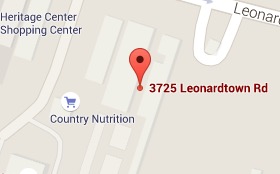Real Estate Newsletter
Federal Superfund Program to Clean Up Hazardous Waste Sites
In an effort to address the threat posed by the tens of thousands of abandoned and uncontrolled hazardous waste sites in the United States, Congress enacted the Comprehensive Environmental Response, Compensation, and Liability Act (CERCLA) on December 11, 1980.
Also known as the Superfund law, CERCLA created a tax on the chemical and petroleum industries to finance a federal program for responding to hazardous waste releases and cleaning up hazardous waste sites. In conjunction with the Environmental Protection Agency (EPA), the Superfund mission is to identify, prioritize and clean up hazardous waste sites that put human health or the environment in danger.
The Identification and Prioritization of Superfund Sites
Superfund cleanup begins with the EPA’s discovery of Superfund sites, which include any land in the United States that has been contaminated by hazardous waste and is releasing or has the potential to release hazardous substances into the environment. Once the EPA has discovered or has been notified of a potential hazardous substance release site, the EPA enters the site into a computerized inventory system and prioritizes cleanup based on an evaluation of the threat posed by the site.
The Superfund Law and Liability for Cleanup
Among other objectives, CERCLA established prohibitions and requirements concerning hazardous waste sites, and created a scheme for imposing liability on the parties responsible for contamination. In line with the goal of punishing the wrongdoer, the Superfund law requires the parties responsible for the contamination to clean up the contaminated site. CERCLA also established a trust fund to provide for cleanup in cases where the EPA could not identify a responsible party. Initially funded by the tax on the chemical and petroleum industries, the Superfund trust collected approximately $1.6 billion in its first five years of existence. On October 17, 1986, CERCLA was amended by the Superfund Amendments and Reauthorization Act (SARA), which increased the size of the trust fund to $8.5 billion.
However, the size of the trust fund has been steadily dwindling since December 31, 1995, when Superfund’s taxing authority officially ended. Since that time, money to decontaminate Superfund sites has come from the cleanup costs recovered from the parties responsible for the toxic waste. In fact, the Superfund scheme imposes liability “jointly and severally” on all parties that have any relationship at all to the waste site, which means that any one party may be held liable for the entire cost of the cleanup. Further, the U.S. Supreme Court has held that a parent corporation may be held directly liable for the cleanup of a subsidiary company’s facility, where the parent corporation manages the operation of the polluting facility.
Limitations on Liability – Small Business Liability and Brownfields Revitalization Act
In order to temper the potential impact of Superfund’s joint and several liability scheme on small businesses that contributed only minimal amounts of waste to a particular site, President Bush signed the Small Business Liability and Brownfields Revitalization Act in January 2002. In pertinent part, the bill exempts the following entities from liability:
- Businesses that disposed of less than 110 gallons of liquid material or less than 200 pounds of solid hazardous waste at a site before April 1, 2002
- Homeowners
- Small business (100 or less employees)
- Small non-profit organizations that sent everyday trash to a municipal waste dump that later became a Superfund site
- Owners of property contiguous to contaminated property on which a release or threatened release of hazardous substances actually occurred
The bill also provides funds for the redevelopment of “brownfields” (polluted urban industrial sites), and relieves new brownfields owners of liability for cleanups if they had no reason to know the property was contaminated at the time of purchase.
Insurance Coverage Issues and the Pollution Exclusion
Superfund liability has provoked insurance coverage conflicts, over whether certain standard general liability policies extend to cover damage caused by pollutants. Most insurance coverage-related litigation has hinged on the applicability of the “pollution exclusion” language found in most standard liability policies between 1973 and 1986, which generally excluded coverage for pollution unless it was “sudden and accidental.” Subject to an individual state court’s interpretation, this language could potentially bar coverage in cases where pollution has occurred gradually over time (as has been the case on many Superfund sites).
As interpretation of insurance contract language is subject to the discretion of an individual state court, there is a split of authority among the courts over whether the pollution exclusion clause bars coverage for gradual pollution. Usually, a court will rule in favor of a policyholder when it finds the insurance contract language to be ambiguous. In 1994, the U.S. Supreme Court affirmed that the pollution exclusion applies to the discharge of pollutants rather than to the damage caused by pollutants, holding that insurers are liable for cleanup if the pollution discharge was accidental.
In 1985, the insurance industry developed a new pollution exclusion, which excludes damage caused by the discharge of all pollutants (regardless of whether it was sudden and accidental). Since then, a majority of courts have held that absolute pollution exclusions are unambiguous and exclude coverage for all pollution liability claims (including non-environmental pollution).
© 2024 NextClient.com, Inc. All rights reserved.



